Fernwayer’s Buenos Aires Tours
Private tours in Buenos Aires led by local experts and insiders. Explore galleries, markets, street art, political history, and go backstage at tango shows and monuments with Porteños – the people of the port.
They call it the “Paris of South America,” but this doesn’t quite do justice to Buenos Aires. Although much of the Argentine capital was designed by elite society who wished to recreate a European metropolis, the beauty of Buenos Aires lies in its cultural fusion – expressed not only by bricks and mortar but through gastronomy, the arts, and porteño voices.
Our approach reaches beyond the elegant mansions of Avenida de Mayo and sits you down with the real porteños; through immersive storytelling and intimate cultural exchange, you’ll experience what makes this city tick. Applying a checklist mentality isn’t going to cut it in this gigantic city, which is why these experiences hone in on a particular strand of porteño culture. Only by diving into one neighborhood at a time or giving your full attention to one topic will you fall into the local tempo.
A tango star will teach you the steps in privacy before shepherding you to a milonga. Local historians will weigh up both sides of Peronism and educate you on the women from Buenos Aires’ past. A photographer will share a different side to Recoleta Cemetery and La Boca. Open-hearted porteños will invite you to sip mate and guide you on a culinary odyssey shaped by centuries of immigration and integration. As our Experience Makers prove, the only danger in Buenos Aires is falling head over heels and never wanting to leave.

FERNWAYER'S BUENOS AIRES ESSENTIALS
We’ve curated an assortment of experiences that capture the soul of the Argentine capital. As the most authentic tours in Buenos Aires, these cultural exchanges invite you to explore the city through the eyes of those who know it best.
Our curated tours bridge the gap between historical and modern Buenos Aires. Our handpicked experts will weave you around the most beautiful – and beguiling – barrios through personalized, meaningful storytelling. While strolling along the bustling Avenida Corrientes, you will juxtapose the palatial architecture of the past with today’s vibrant social scene. At the side of a photographer, you will capture dancers on the colorful streets of La Boca, the birthplace of tango. And rest assured, you’ll leave any food experience with a heart as full as your tummy.
Explore our essential Buenos Aires tours below and browse all Buenos Aires experiences here.
MAKE THE MOST OF YOUR TIME
Fernwayer’s Buenos Aires Journeys—suggested itineraries, designed by us, booked by you—are anchored in our curated experiences.
Just one day in Buenos Aires? Step into the city’s political history on a walking tour culminating at the graveside of Eva “Evita” Peron, followed by a mate ritual experience and casual evening at the milonga, where novices and pros dance tango side by side. With three days in Buenos Aires, you can dive deeper into the local culture by taking a tango class, eating your way around Palermo’s restaurants on a gourmet food tour, and experiencing the nocturnal happenings of Avenida Corrientes. Five days in Buenos Aires opens up the possibility to take a boat trip in Tigre or catch the ferry for a day trip in Colonia del Sacramento, Uruguay. If you’re pairing Buenos Aires with other destinations in Argentina, you’ll find authentic gaucho experiences and one-of-a-kind gourmet experiences in Mendoza, the cradle of Malbec.
The Human Edit
Need help planning your trip? A Fernwayer curator takes your preferences and designs a custom travel itinerary that works. This is human-led travel planning — by someone who understands the art of travel itinerary design — built around your dates and preferences. Each personalized itinerary uses Fernwayer experiences as anchors and complements them with recommendations for flights, hotels, restaurants, and self-explore ideas.
FOLLOW YOUR PASSIONS
If tango is your beat, take a class with a globally renowned dancer or spend a night at a local milonga. If cultural heritage calls out to you, explore the city with local guides who’ll share stories not published in guidebooks. If you’re happiest behind the lens, our photography tours help you see Buenos Aires in a different light. If you’re all about the visuals, our arts tours lay bare the work of artisans, architects, and dancers. If food means more to you than subsistence, our food and drink tours plate up local culinary culture.
Tango Tours
Born in the working-class neighborhoods of La Boca and San Telmo, tango is an expression of the city’s soul. Taking a private tango class is more than mastering the steps; it’s an introduction to this emotional language. Attending a milonga is made far less daunting when you’re at the side of a local dancer who frequents these nightly dance halls. Wandering the streets where tango originated or catching a show with a photographer forges a deeper connection with this unique art.
Photography Tours
See Buenos Aires in a different light on a tour with an award-winning professional porteño photographer. Our private photo tours strike the perfect composition; they take you to see the iconic landmarks such as Recoleta Cemetery but from the perspective of an artist. You’ll take in – and shoot from – viewpoints usually restricted or off-limits and explore the bohemian streets of San Telmo. Capturing tango dancers on the vibrant corners of La Boca or slipping backstage at a tango house are two rare access experiences.
Food Tours
Not only is Buenos Aires a feast for the eyes, but every barrio is a gourmet bonanza! Savor authentic and surprising flavors on a premium food tour of the best restaurants, cafes, and food markets in trendy Palermo. Rather than simply grabbing empanadas on the go, sign up for a class where you’ll learn to make these iconic pastries from scratch. Experience the moment that defines the day for every Argentine, the ritual of sharing mate – a herbal beverage clutched in the palms of any proud porteño.
Arts Tours
Art in Buenos Aires encompasses performative, visual, and architectural art. Let an art curator be your chaperone at emblematic museums as well as lesser-known galleries staffed by his former students. Explore mural-laden barrios with an expert who connects the dots between street art in Buenos Aires with other major cities. Come to know your Belle Époque from your Art Deco on an architectural walking tour of Buenos Aires’ European-influenced boulevards. Find your feet in a private tango class with a renowned dancer who carries her own jewelry line.
NEIGHBORHOOD GUIDE
At first glance, you might think this is a “normal-sized” city. In reality, Buenos Aires’ main places of interest are widely spread – this mammoth city is most comparable with the European cities of Paris and London. Sub-neighborhoods do tend to be walkable but you’ll need to rely on public transport for longer distances.
Where to stay? For a quiet stay close to main attractions and with reliable transport connections, stay in one of the areas north of the historic civic center. Best places to stay? Recoleta. This safe, residential district is home to 5-star hotels, sophisticated restaurants, and Recoleta Cemetery. It has excellent metro and bus links and is hushed in the evening. Retiro: Similar to Recoleta, Retiro has a fantastic selection of international hotels and a slew of notable landmarks. This neighborhood is convenient for nights at the theater and for those planning on taking a day trip by train or ferry. Palermo: A vibrant, youthful district with a lively dining, shopping, and nightlife scene spread across its three smaller barrios. Boutique hotels and apartment rentals are commonplace in Palermo, which means securing a room with plenty of notice is essential.
For more neighborhood highlights, flip the cards below.
Buenos Aires Neighborhood Guide
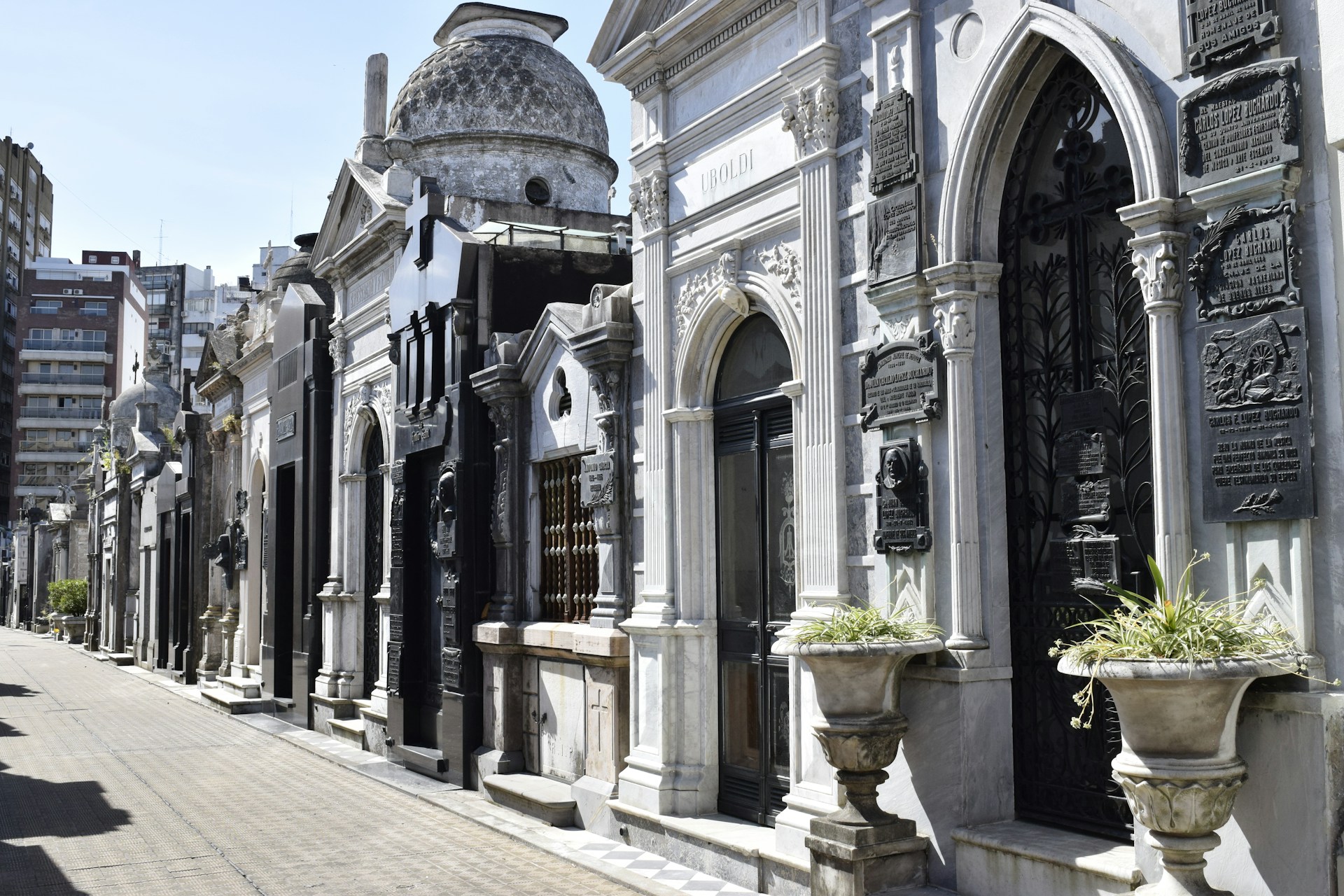
Recoleta
A refined neighborhood with architecture evoking 19th-century Paris, upscale dining, high-end shopping, and luxury accommodations. Cultural attractions like the Recoleta Cemetery, the National Fine Arts Museum, El Ateneo Grand Splendid, and the National Library are within walking distance of most hotels. Recoleta’s streets are busy during the day but calm in the evenings and the neighborhood ranks highly for safety. Located just north of the historic center and a short drive from Jorge Newbery Airport, Recoleta is a convenient place to stay in the heart of Buenos Aires. Recommended experience: Buenos Aires From Above
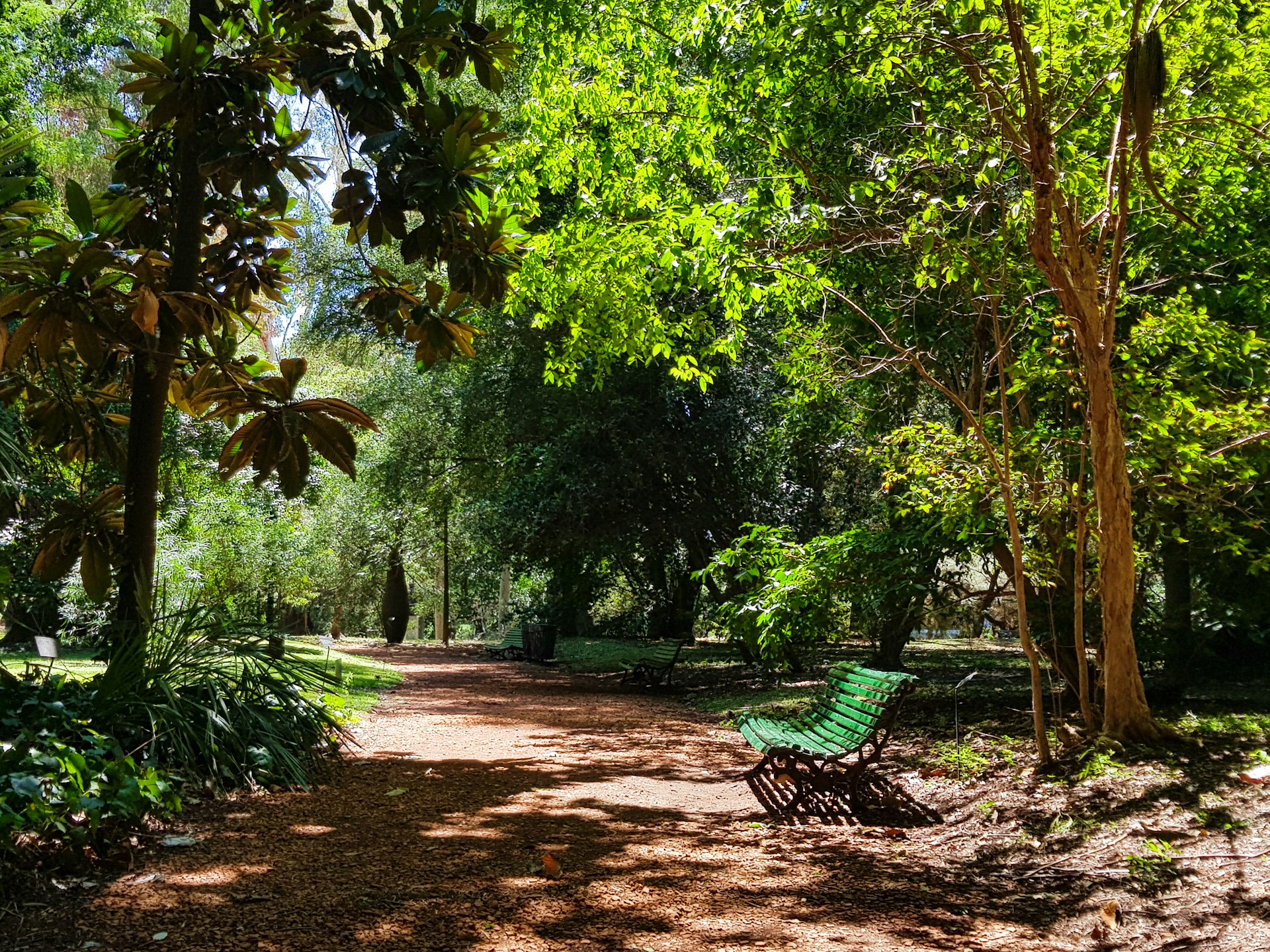
Palermo
The largest district in Buenos Aires, Palermo is divided into several smaller neighborhoods, with Palermo Soho, Palermo Chica, and Palermo Hollywood carrying the majority of the appeal. As a hub for bookstores, fashion ateliers, designer boutiques, and modern eateries, this trendy area is a joy to explore independently and through tours. Top attractions include MALBA, Plaza Serrano, the Japanese Garden, the Evita Museum, and Las Heras Park. Stay in Palermo if you’re eager to partake in local cafe culture and nightlife. Palermo is huge, so you’ll need to rely on public transport and Uber beyond the walkable sub-barrios. Recommended experience: Buenos Aires in Seven Courses
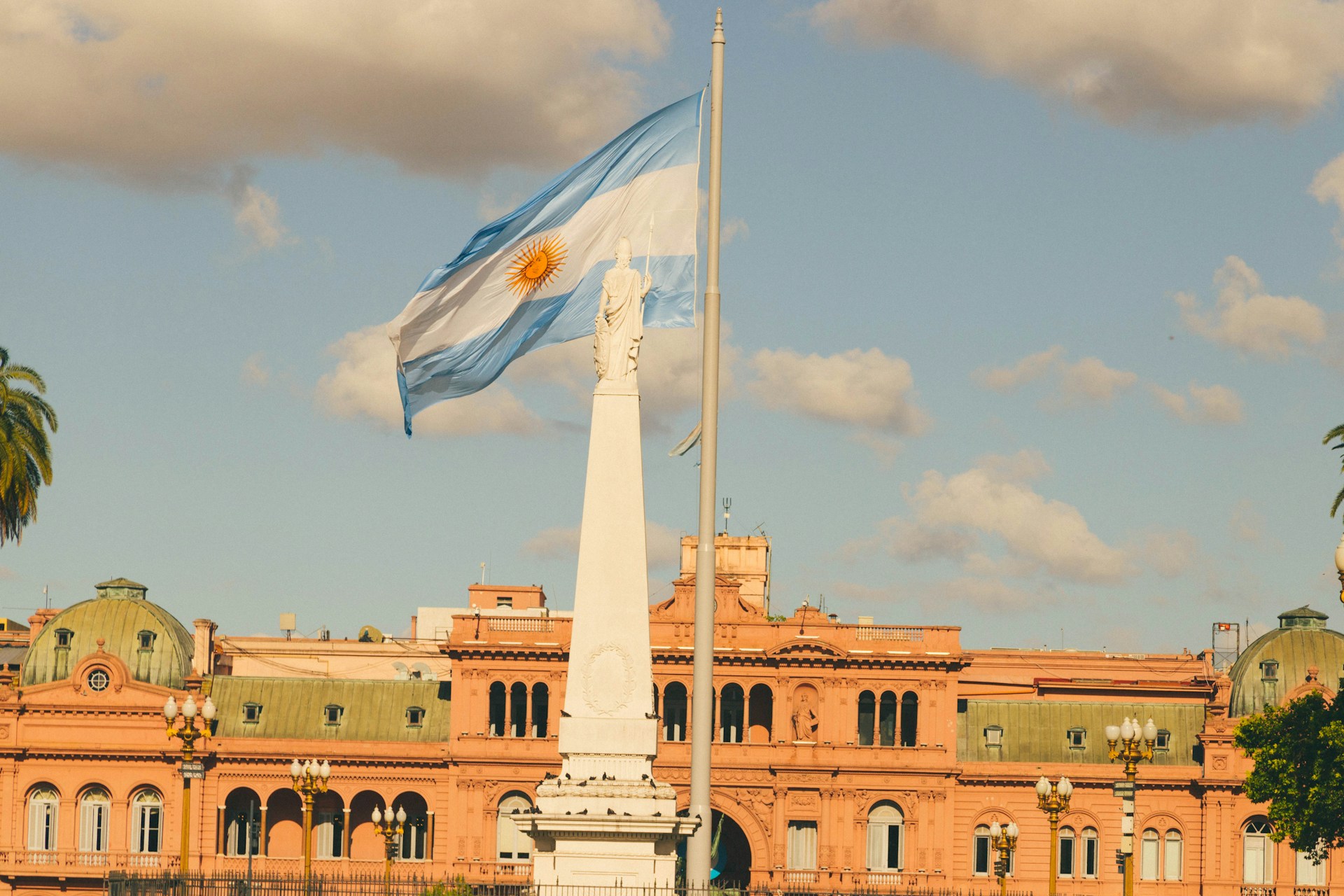
Monserrat
Bounded by San Nicolás and Constitución, this trio essentially forms the historic civic center of Buenos Aires. Avenida 9 de Julio stands as a testament to Argentina’s Independence Day while Plaza de Mayo is ringed by monumental buildings such as Casa Rosada, the Metropolitan Cathedral, and the Cabildo Museum. At the western end of Avenida de Mayo, you’ll find the Argentine Congress Building. Home to the storied Café Tortoni, Monserrat is a place you’ll want to explore but not necessarily spend the night: hotels are more basic and traffic noise can be bothersome. Recommended experience: Quintessential Buenos Aires
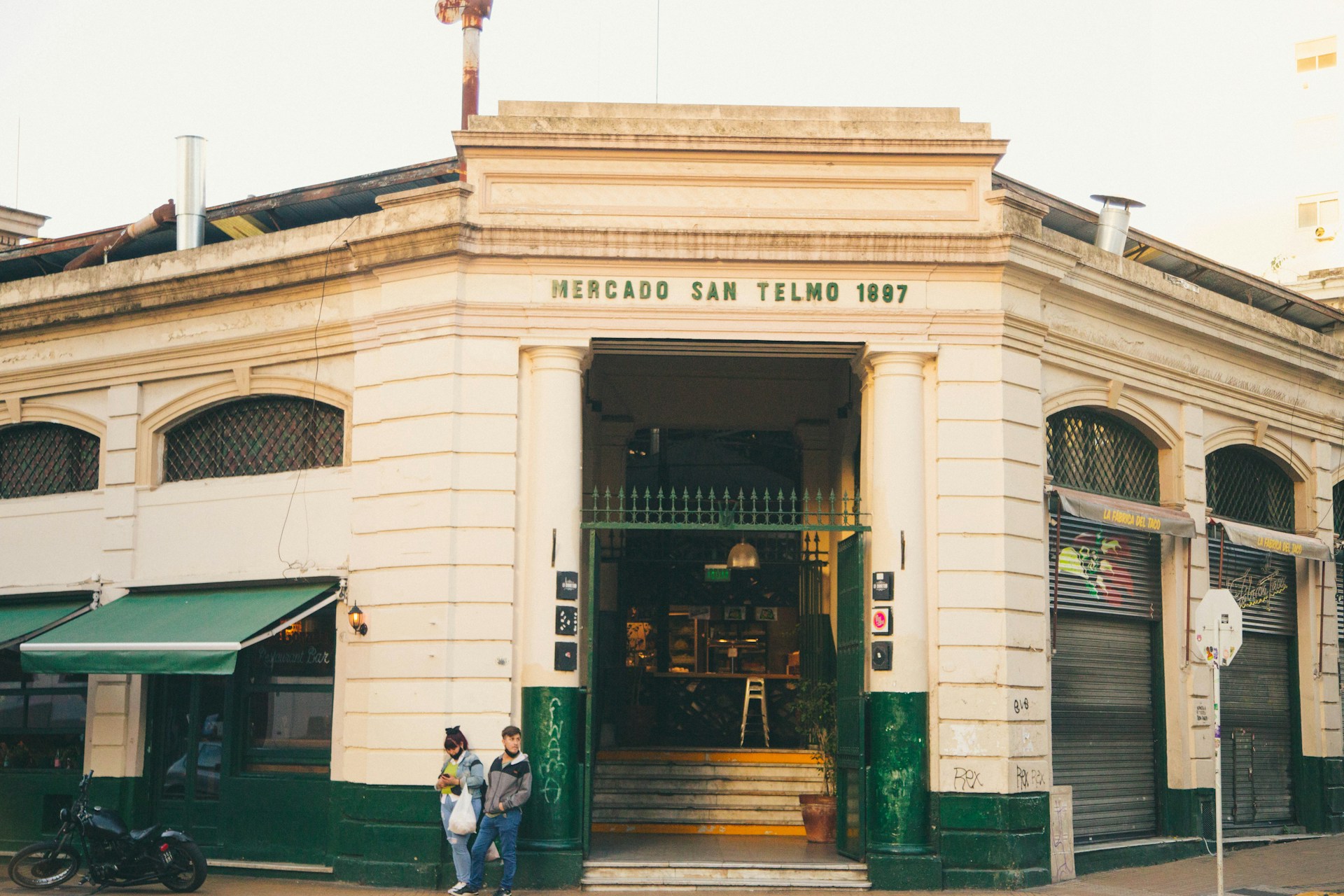
San Telmo
This bohemian neighborhood swells with food markets, antique stores, tango halls, and authentic steakhouses. Beautiful San Telmo is the oldest part of the city, where cobblestone streets lead to leafy plazas and colonial-era buildings. San Telmo Market is open daily but Sunday is the best day to visit for the street fair on Defensa Street. Major attractions include El Zanjón de Granados, the National History Museum, and Lezama Park. San Telmo should star on any Buenos Aires itinerary although we would recommend visiting during the day and choosing accommodation elsewhere. Recommended experience: Rhythms of La Boca & San Telmo
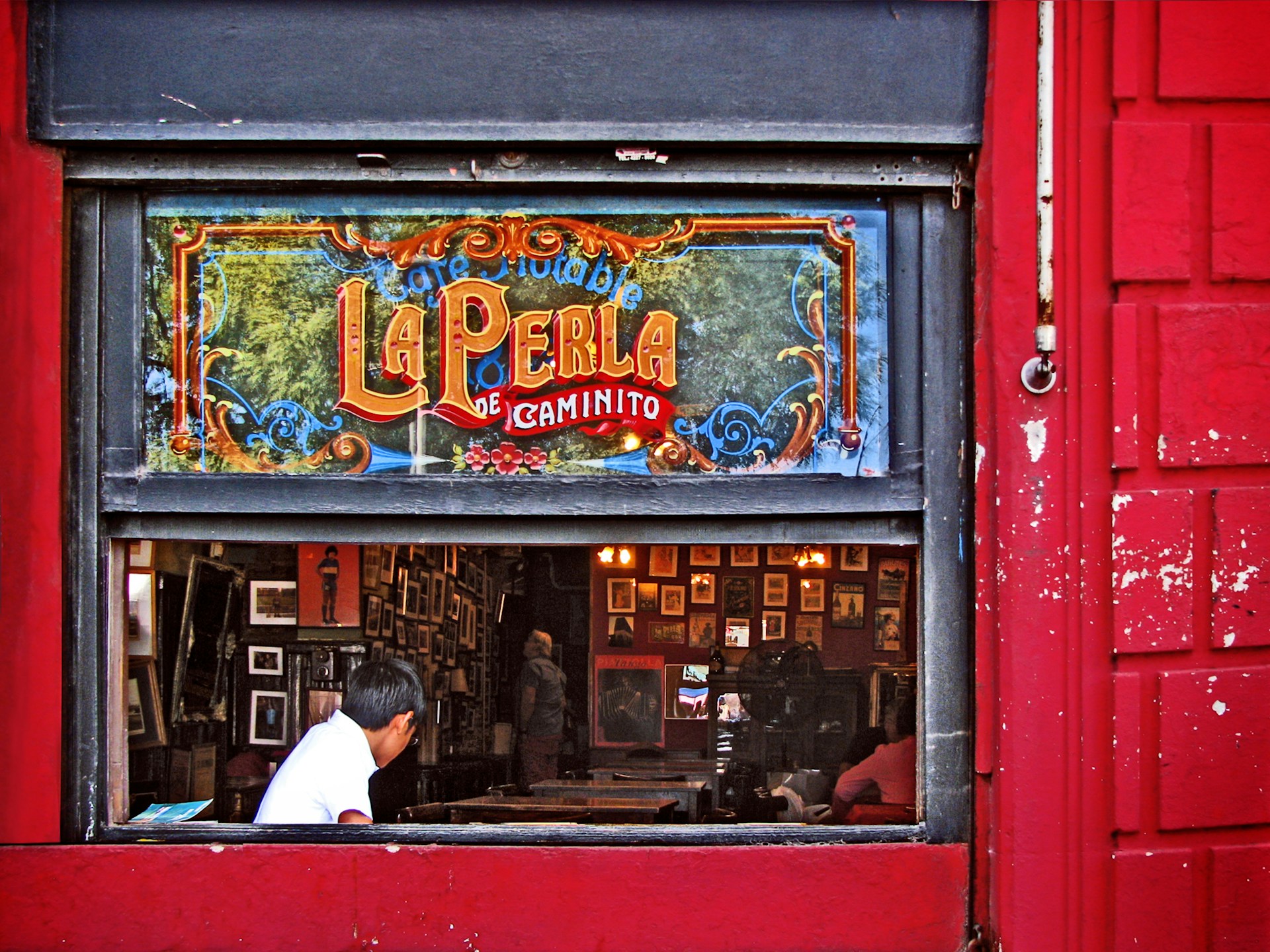
La Boca
Images of colorful tenement houses and scenes of tango dancers rehearsing their steps may well be the motivation behind your trip to Buenos Aires. La Boca (literally, “the mouth”) was settled by fishermen, creatives, traders, and laborers during the immigration influx. The touristic experience revolves around Caminito, a narrow street which serves as a kind of open-air museum. This historic enclave south of San Telmo is best visited with a local guide during the day, when the painted streets shine under the midday sunshine. Safety is of concern during the evening. Recommended experience: A Tango Caminata in La Boca
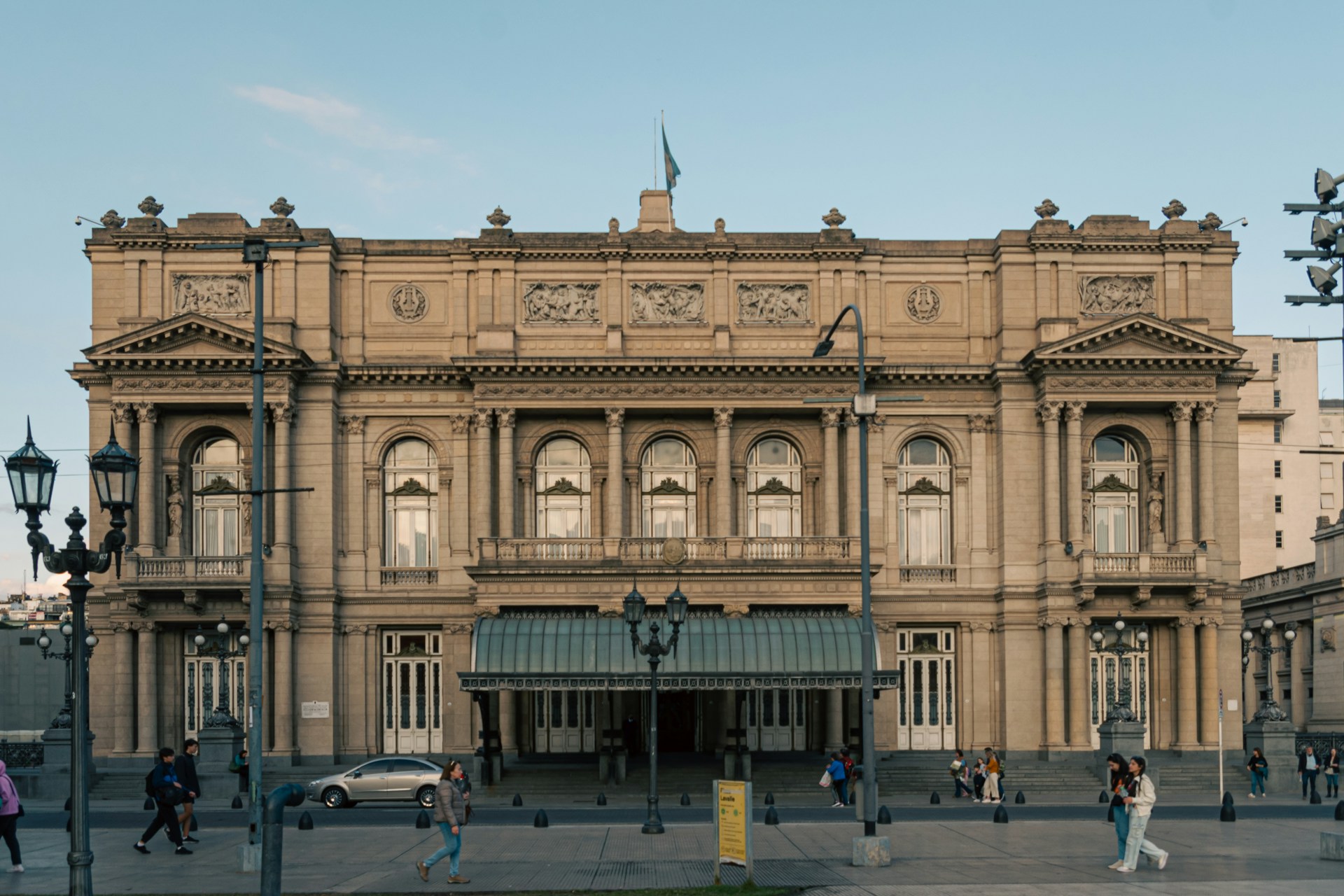
Retiro
Lying to the east of Recoleta, Retiro serves as an extension of its slightly posher neighbor. International hotels and boutique lodgings dot these quiet streets while the city’s major theaters fan around Plaza Libertad. The British-designed Retiro Train Station is an attraction in its own right, while Plaza General San Martín, the Torre Monumental, and the Immigration Museum chronicle key periods in Argentine history. Retiro is an excellent base in Buenos Aires although caution should be exercised around the train station, especially during the evening. Recommended experience: Politics On Foot
FREQUENTLY ASKED QUESTIONS
Arriving as informed as possible will streamline your experience in Buenos Aires. We have tackled the typical questions to help you prepare for your visit, including how to get around the city, staying safe, what to eat, and how to acquire cash.
How do I move around effortlessly? Buenos Aires has a wonderfully efficient metro system called the Subte. Services start early in the morning, around 5:30 AM on weekdays (8:00 AM on Sundays and public holidays), and finish for the day around 11:00 PM. Before using the subway, you will need to purchase a rechargeable SUBE card from a kiosco (small convenience store) or metro station. Uber and Cabify work very well in Buenos Aires and are safer than unlicensed taxis. Bear in mind that the metro is faster for longer distances but services are busy during morning and afternoon rush hours. You will likely want to mix and match the metro with Uber and Cafify.
Is Buenos Aires safe? As a touristic city, Buenos Aires is safe to visit and porteños welcome foreigners. While violent crime is rare in the neighborhoods we have spotlighted, petty theft is a concern and we do urge all travelers to take care with valuables – especially in crowded areas, on the metro, and in restaurants. Pay attention to your surroundings when hailing Ubers or consulting maps from the sidewalk. The usual precautions of a large city should be followed at night: avoid dimly lit streets, travel as a pair, and heed the advice as per our neighborhood guides. Avoid taking street taxis as scams are known to happen – Uber and Cabify are safer options.
Is it safe to visit La Boca and San Telmo? These neighborhoods, in particular, are subject to warnings from official advisories, which do cause alarm. Our stance is that La Boca and San Telmo are two of the most culturally enriching parts of the city and deserve a visit, but that added care is needed. We recommend only visiting La Boca during daylight hours, ideally in the morning. Most of the activity focuses on Caminito, where police maintain a presence for added peace of mind. As pickpocketing is the main concern, we suggest not carrying a large bag – only a small crossbody pouch for essentials. It's also wise not to wear jewelry or watches, as these can catch the attention of a chancer. The same principle applies to San Telmo, where pickpockets target tourists exploring the craft stalls and covered market. On the whole, San Telmo is safer, but both of these districts do benefit from the care of a guide. All Fernwayer Experience Makers are committed to keeping our travelers safe and ensuring your experience runs smoothly.
Do I need to speak Spanish? While helpful (and much appreciated by locals) to know some phrases, it is possible to get around Buenos Aires without any knowledge of Spanish. Hotels and attractions generally have English-speaking staff on hand whereas most, but not all, restaurants carry menus in Spanish and English. We recommend downloading DeepL or Google Translate as a means of communication.
When is the best time to visit Buenos Aires? Buenos Aires is a year-round destination with each season bringing its own charm. The city does experience cold winters (June to August) and hot summers (December to February) with surprisingly high humidity which means you’ll need to pack appropriately. The shoulder seasons of spring (September to November) and fall (March to May) bring the most pleasant weather conditions for a mixed itinerary of indoor and outdoor attractions. Tourism peaks in summer but the city is always busy.
What should I eat? Buenos Aires is a thrilling destination for epicureans. Items to try include empanadas (stuffed pastries), Milanesa (breaded cutlet of chicken or beef), fainá (chickpea flatbread), and alfajores (shortbread confectionery). Red meat is practically a currency: asado restaurants specialise in barbecue meat while parilla denotes a steakhouse. Argentinians usually start with a choripán (chorizo sausage in a bread roll) before sharing some cuts of meat. “Sin Tacc” on menus and packaging denotes an item free from wheat, barley, oats, and rye. Many restaurants close for a few hours between lunch and dinner in Buenos Aires, with locals rarely stepping foot in a restaurant before 9:00 PM.
How far ahead do I need to book restaurants? If you have your eye on a particular restaurant, it’s advisable to book weeks in advance – or months in summer. Michelin-rated restaurants in particular should be booked way ahead of travel via the restaurant’s website or WhatsApp. Chat to your hotel’s concierge at check-in and ask them to procure reservations – this will take care of any language barrier. Rest assured, you can always find a place to eat in Buenos Aires.
Can I drink tap water? While the tap water is perfectly safe to drink in Buenos Aires, the mineral content could unsettle your stomach – if only for the first few days. Not everyone likes the taste, which is why many locals prefer to drink bottled water. A small glass of sparkling water is usually served alongside a coffee in a restaurant and staff will be happy to top you up with either tap water (“agua de la canilla”) or bottled water.
What is mate? Mate (pronounced MAH-teh) is a caffeinated herbal infusion made from dried yerba leaves. The leaves are tipped into a gourd which is topped up with hot water from a thermos and sipped through a bombilla straw. Argentinians consider it ritualistic, and sharing mate with friends and family is an everyday occurrence. You’ll see that few porteños leave home without their satchel of mate gear.
How can I pay for items? Argentina’s economy experiences high inflation and fluctuating exchange rates. There are several exchange rates within the country: the “official” exchange rate and the “blue” exchange rate being most typical, although there are more niche exchange rates too—some apply specifically to credit and debit cards. Rates change very fast so you’ll want to monitor the latest rates ahead of travel and during your trip. As ATMs in Buenos Aires have low withdrawal limits and high fees, travelers are recommended to carry a strong currency such as United States Dollars or Euros which may be exchanged at casas de cambio. Note that many offices only accept crisp, unfolded, and unmarked bills. Sending money to a Western Union branch is another reliable way to procure cash within the country at a favorable exchange rate.
Should I leave a tip? Tipping is not expected at restaurants in Buenos Aires, although some establishments add an optional “propina sugerida” to the bill of 10 percent. In the case of good service, gratuity will always be appreciated; 10 percent is the norm in cafes and restaurants and should be left as a cash tip in Argentine pesos. The same applies to housekeeping – leaving a token of appreciation will never cause offence. There’s no obligation to tip taxi drivers unless they helped with heavy baggage or went the extra mile. As an all-inclusive marketplace, tipping is never expected on Fernwayer’s wallet-free experiences.
How can I transfer from the airport? First of all – there are two major airports in Buenos Aires. Aeroparque Jorge Newbery (AEP) is centrally located in Palermo, just 15 minutes by taxi from Recoleta/Retiro. It is possible to call an Uber or book a private transfer in advance via your hotel, or at the desk in the airport arrivals hall. This airport is a hub for domestic flights and regional connections with Chile, Brazil, and Uruguay. Ministro Pistarini International Airport, or Ezeiza International Airport (EZE), handles flights from the United States and Europe. Taxis take around one hour to reach Recoleta/Retiro and arranging a private transfer ahead of arrival will cushion the landing experience. Otherwise, speak to the official taxi booths at the arrivals hall: they will provide a quote and see you safely into a licensed taxi.
Can I buy a SIM Card? If you do not have an e-SIM for Argentina, you can purchase a “Chip Turista” SIM card in Buenos Aires. Personal, Claro, and Movistar are the main providers. You can purchase these from official stores or from kioscos – the vendor will activate your chip. Your passport is required to purchase a SIM card in Buenos Aires.
DISCOVER MORE OF ARGENTINA
Explore Argentina, city by city.
New Experiences Every Month!
We travel the world in search of transformative experiences outside the beaten paths. Subscribe to our newsletter to be among the first to know about new, exciting experiences around the globe.
FERNWAYER
We are reimagining luxury in travel as authentic connection, immersive storytelling, rare access, and a spirit of curiosity through curated, exclusive, and hard-to-arrange experiences.